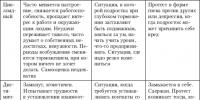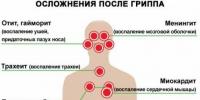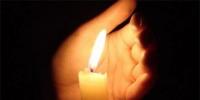Incendiary projectiles. Characteristics of incendiary weapons
1) An important place in the system of conventional weapons belongs to incendiary weapons, which are a set of weapons based on the use of incendiary substances. According to the American classification, incendiary weapons are classified as weapons of mass destruction. The ability of incendiary weapons to exert a strong force on the enemy is also taken into account. psychological impact. The use of incendiary weapons by a potential enemy can lead to massive damage to personnel, weapons, equipment and other materiel, the occurrence of fires and smoke over large areas, which will have a significant impact on the methods of action of troops and will significantly complicate their performance of their combat missions. Incendiary weapons include incendiary substances and means of their use.
Incendiary substances
The basis of modern incendiary weapons are incendiary substances, which are used to equip incendiary ammunition and flamethrowers.
All army incendiaries are divided into three main groups:
Petroleum based
Metallized incendiary mixtures
Thermite and thermite compounds
A special group of incendiary substances consists of ordinary and plasticized phosphorus, alkali metals, as well as a mixture based on triethylene aluminum, which is self-igniting in air.
a) Incendiaries based on petroleum products are divided into unthickened (liquid) and thickened (viscous). To prepare the latter, special thickeners and flammable substances are used. Napalm is the most widely used petroleum-based incendiary. Napalms are incendiary substances that do not contain an oxidizer and burn when combined with oxygen in the air. They are jelly-like, viscous substances with strong adhesion and a high combustion temperature. Napalm is made by adding a special thickener powder to liquid fuel, usually gasoline. Typically napalms contain 3 to 10 percent thickener and 90 to 97 percent gasoline.
Gasoline-based napalms have a density of 0.8-0.9 grams per cubic centimeter. They have the ability to easily ignite and develop temperatures of up to 1000 - 1200 degrees. The duration of napalm burning is 5 - 10 minutes. They easily stick to various types of surfaces and are difficult to extinguish. Napalm B is the most effective. It is characterized by good flammability and increased adhesion even to wet surfaces, and is capable of creating a high-temperature (1000 - 1200 degrees) hearth with a burning duration of 5 - 10 minutes. Napalm B is lighter than water, so it floats on its surface, while retaining the ability to burn, which makes it much more difficult to eliminate fires. Napalm B burns with a smoking flame, saturating the air with caustic hot gases. When heated, it liquefies and acquires the ability to penetrate shelters and equipment. Contact with unprotected skin of even 1 gram of burning napalm B can cause severe damage. Complete destruction of openly located manpower is achieved at a napalm consumption rate 4 - 5 times less than high-explosive fragmentation ammunition. Napalm B can be prepared directly in the field.
b) Metallized mixtures are used to increase the spontaneous ignition of napalm on wet surfaces and on snow. If you add powdered or shavings of magnesium to napalm, as well as coal, asphalt, saltpeter and other substances, you get a mixture called pyrogel. The combustion temperature of pyrogens reaches 1600 degrees. Unlike ordinary napalm, pyrogens are heavier than water and burn for only 1 to 3 minutes. When pyrogel gets on a person, it causes deep burns not only on open areas of the body, but also on those covered by uniforms, since it is very difficult to remove clothes while the pyrogel is burning.
c) Thermite compounds have been used for a relatively long time. Their action is based on a reaction in which crushed aluminum combines with oxides of refractory metals to release large quantity heat. For military purposes, the powder of a thermite mixture (usually aluminum and iron oxides) is pressed. Burning thermite heats up to 3000 degrees. At this temperature, brick and concrete crack, iron and steel burn. As an incendiary, thermite has the disadvantage that when it burns, no flame is formed, so 40–50 percent of powdered magnesium, drying oil, rosin and various oxygen-rich compounds are added to thermite.
d) White phosphorus is a white, translucent, wax-like solid. It is capable of self-ignition by combining with oxygen in the air. Combustion temperature 900 - 1200 degrees. White phosphorus is used as a smoke-forming substance and also as an igniter for napalm and pyrogel in incendiary ammunition. Plasticized phosphorus (with rubber additives) acquires the ability to stick to vertical surfaces and burn through them. This allows it to be used for loading bombs, mines, and shells.
e) Alkali metals, especially potassium and sodium, tend to react violently with water and ignite. Due to the fact that alkali metals are dangerous to handle, they have not found independent application and are used, as a rule, to ignite napalm.
2)Means of application
Modern Army incendiary weapons include:
Napalm (fire) bombs
Aviation incendiary bombs
Aviation incendiary cassettes
Aviation cassette installations
Artillery incendiary ammunition
Flamethrowers
Rocket incendiary grenade launchers
Fire (incendiary) landmines
a) Napalm bombs are thin-walled containers filled with thickened substances. Currently, napalm bombs with a caliber of 250 to 1000 pounds are in service with aviation. Unlike other ammunition, napalm bombs create a three-dimensional lesion. At the same time, the area affected by 750-pound caliber ammunition of openly located personnel is about 4 thousand square meters, rising smoke and flame - several tens of meters.
b) Aviation incendiary bombs of small calibers - from one to ten pounds - are used, as a rule, in cassettes. They are usually equipped with termites. Due to their insignificant mass, bombs of this group create separate sources of fire, thus being incendiary ammunition.
c) Aviation incendiary cartridges are intended to create fires over large areas. They are disposable shells containing from 50 to 600 - 800 small-caliber incendiary bombs and a device that ensures their dispersion over a large area at combat use.
d) Aviation cassette installations have a purpose and equipment similar to aviation incendiary cassettes, but unlike them, they are reusable devices.
e) Artillery incendiary ammunition is made on the basis of thermite, napalm, and phosphorus. Thermite segments, tubes filled with napalm, and pieces of phosphorus scattered during the explosion of one ammunition can cause the ignition of flammable materials over an area of 30–60 square meters. The duration of burning of thermite segments is 15 – 30 seconds.
f) Flamethrowers are effective incendiary weapons for infantry units. They are devices that emit a stream of burning fire mixture under the pressure of compressed gases.
g) Rocket incendiary grenade launchers have a much longer firing range and are more economical than grenade launchers.
h) Fire (incendiary) land mines are intended to be used mainly to destroy manpower and transport equipment, as well as to strengthen explosive and non-explosive obstacles.
Incendiary shells
INCENSIBLE PROJECTILES, appeared much earlier than gunpowder and firearms. weapons. The first indications of Z. sn. There are in the history of the era of “Greek fire”, which was lit in vessels, pipes, etc. and thrown by hand or by person. met. cars mainly at sea. battles, but there is a definition. instructions for using it on land. During the siege of Western cities, people, in the form of bags filled with “Greek fire,” pots of burning oil, etc., were thrown into buildings, into trees. towers, fences, bridges, etc. With the spread of gunpowder for the preparation of earth. They began to fill it with a special Z. composition, which was also prepared from the composition. parts of gunpowder. mixtures, dil. vessels, for example, clay pots for hand Z. sn. (Fig. 1)., round canvas bags tied with ropes, and then Z. sn. began to be prepared in the form of two iron or copper hemispheres (Fig. 2), fastened together with wires. bound and filled with a mixture of resin, sulfur, lime and gunpowder; such Z. sn. They fired from bombards and large mortars. caliber. The former Z. sn. were also very widespread. in the form of bags filled with Z. composition, only a few. modified and called frames (Fig. 3). Cross-shaped arched glands. the strips were attached to the bottom of the iron. cup; canvas was placed inside. a bag half filled with gunpowder, which served as a burst. charge, half Z. train, and from the outside it was all braided with resin ropes. One or more were inserted into the bag from the sides. wood tubes (Fig. 4) with Z. composition and stopine blank for igniting the composition when firing or before firing already in the mortar channel. Tow was added to the composition, soaked in oil; the edges, together with the third composition, after the shell fell to the ground and exploded, caught fire and were scattered in all directions. Sometimes bullets were put into the tubes. On the W. sn. Sometimes hooks were attached to catch them when they hit the fascine. clothes, wood buildings, etc. Since the end of the 16th century. They often began to put Z. sn. inside. and rupture. cast iron. shells to hit people with shrapnel. By the end of the 17th century, first in Saxony. art pieces appear along with frames and cast iron. Z. bombs, - fire starters (see. this word). Z. composition for the latter: 16 hours gunpowder. pulp, 16 hours of saltpeter, 8 hours of sulfur, 6 hours of wax, 2 hours of lard, 8 hours of resin, 3 hours of antimony, 8 hours of turpentine and chopped rags. All this was cooked together, with sulfur serving to slow down combustion, lard increasing flammability, and turpentine serving to increase the flame. Break. charge in the amount of 8 hours art. gunpowder was placed at the bottom before filling the brand kugel with Z. composition. With the transition to cutting. art-ri role of Z. sn. switched to ordinary. pomegranate; only in Austria until recently. time (1892) there was still a special Z. grenade (Fig. 5), which differed from the usual one in that the void was cast iron. thick-walled The projectile was filled with Z. composition (as for firebrands), and in the head of the projectile there was several. side. glasses with blanks, which caught fire when fired, so there was no need for special ones. tube. In the rest of the artillery until 1866, some were ordinary. The grenade was equipped for Z. action, for which together with the explosion. pieces of dough were placed in charge. Z. composition, tied with canvas and powdered with pulp (Russia) or brass. tubes with Z. composition (Prussia). Produced after the war of 1866 special. experiments in shooting at trees. buildings b. Quite good Z. action of ordinary ones has been established. pomegranate, and therefore then everywhere except Austria, b. Grenade equipment with Z. action has been withdrawn from use.




Military encyclopedia. - St. Petersburg: T-vo I.D. Sytin. Ed. V.F. Novitsky and others.. 1911-1915 .
See what “Incendiary projectiles” are in other dictionaries:
Incendiary ammunition- bullets, artillery shells (mines), aircraft bombs, hand grenades intended for the destruction of flammable objects, destruction of manpower and military equipment by the action of incendiary compositions (See Incendiary compositions).... ...
Artillery shells- type of ammunition intended for firing from guns, mortars, and rocket artillery; component artillery shot (See artillery shot). S. a. consists of a body, equipment (or tracer) and a fuse (See... ... Great Soviet Encyclopedia
INcendiary COMPOSITIONS- pyrotechnics compositions, as well as flammable substances or mixtures thereof, used to equip ammunition or flamethrowers. 3. p. are divided into two groups: 1) compositions with oxidizing agents Mn and Fe oxides (see Thermite), metal nitrates or perchlorates)




